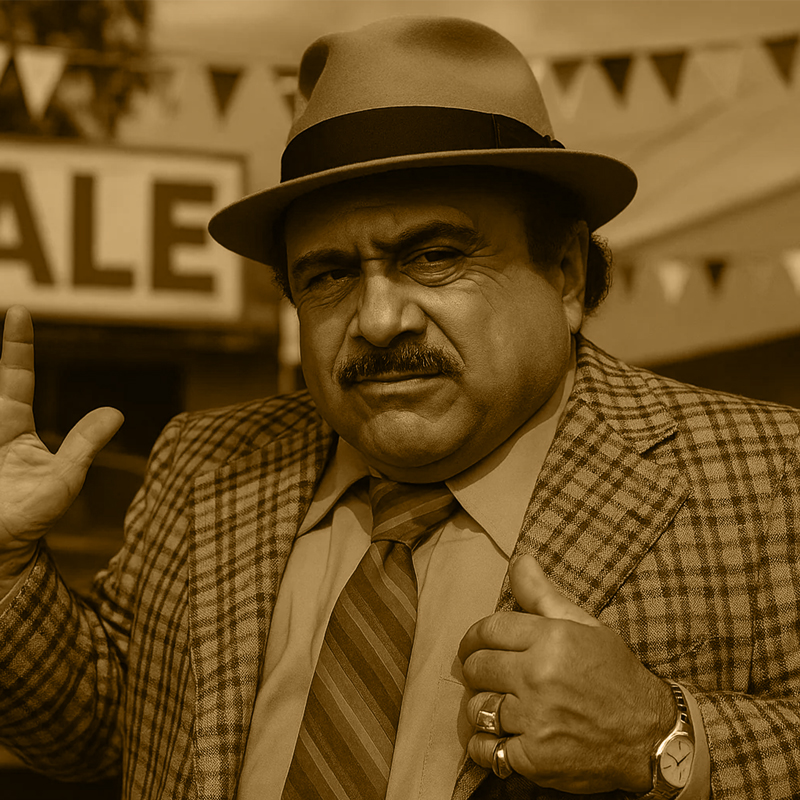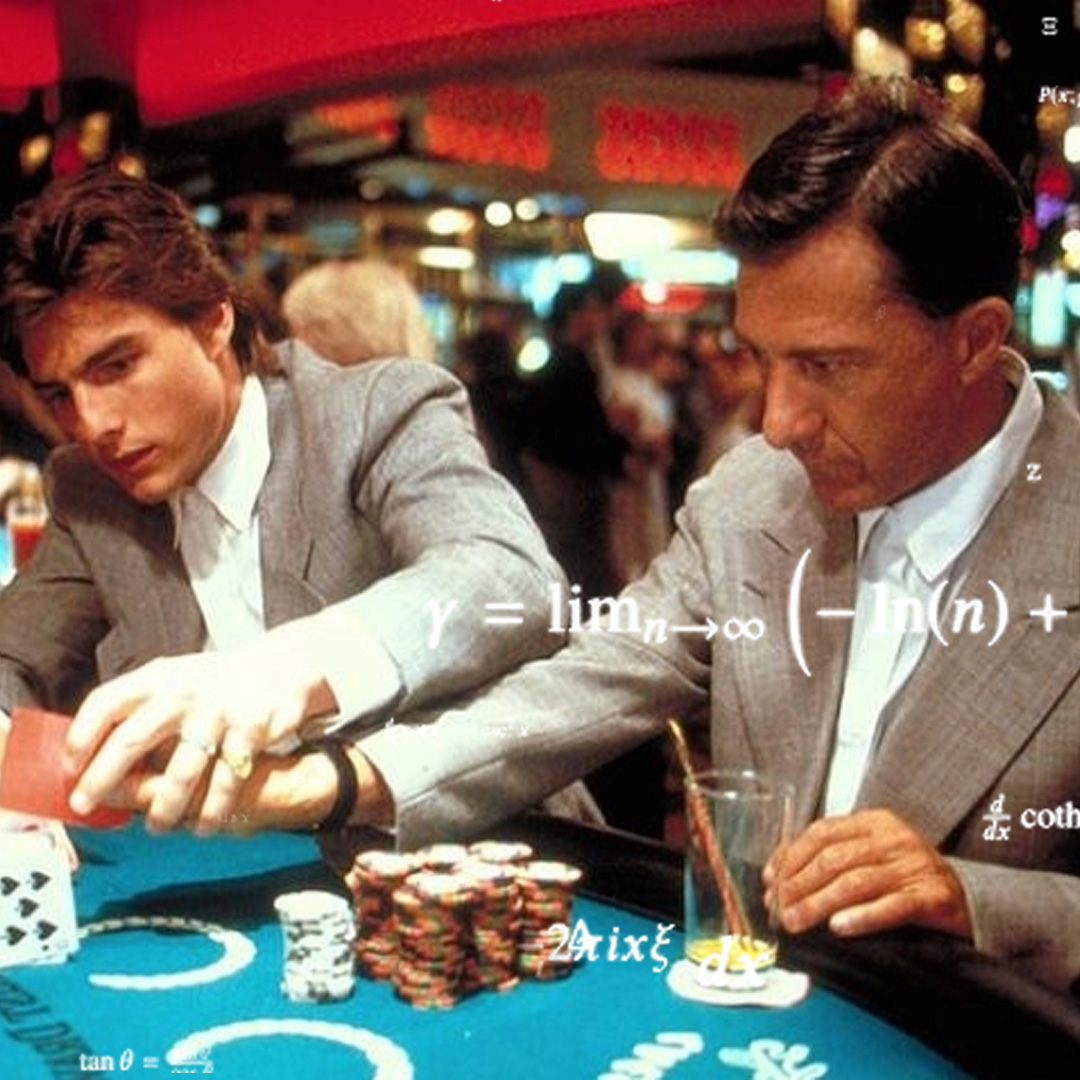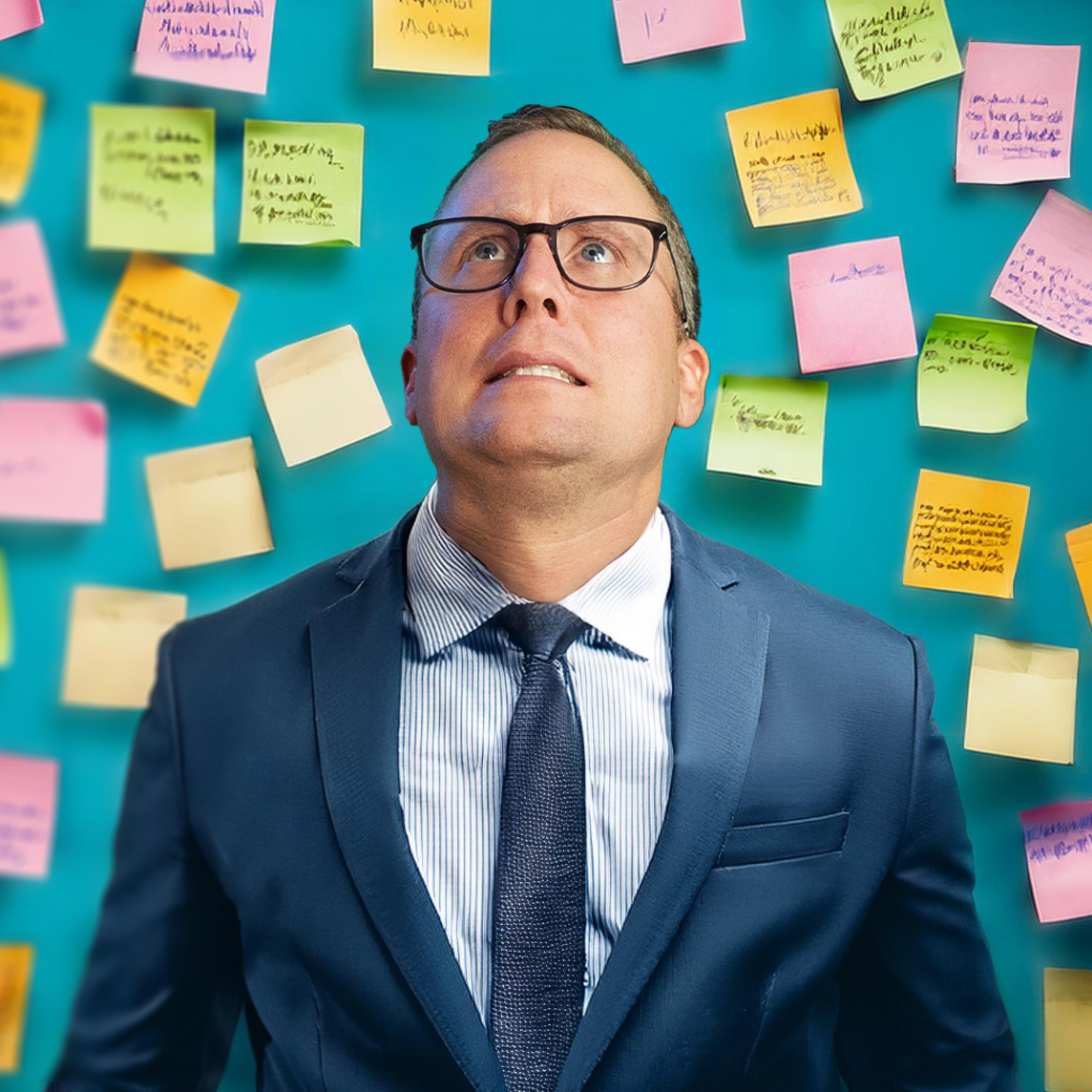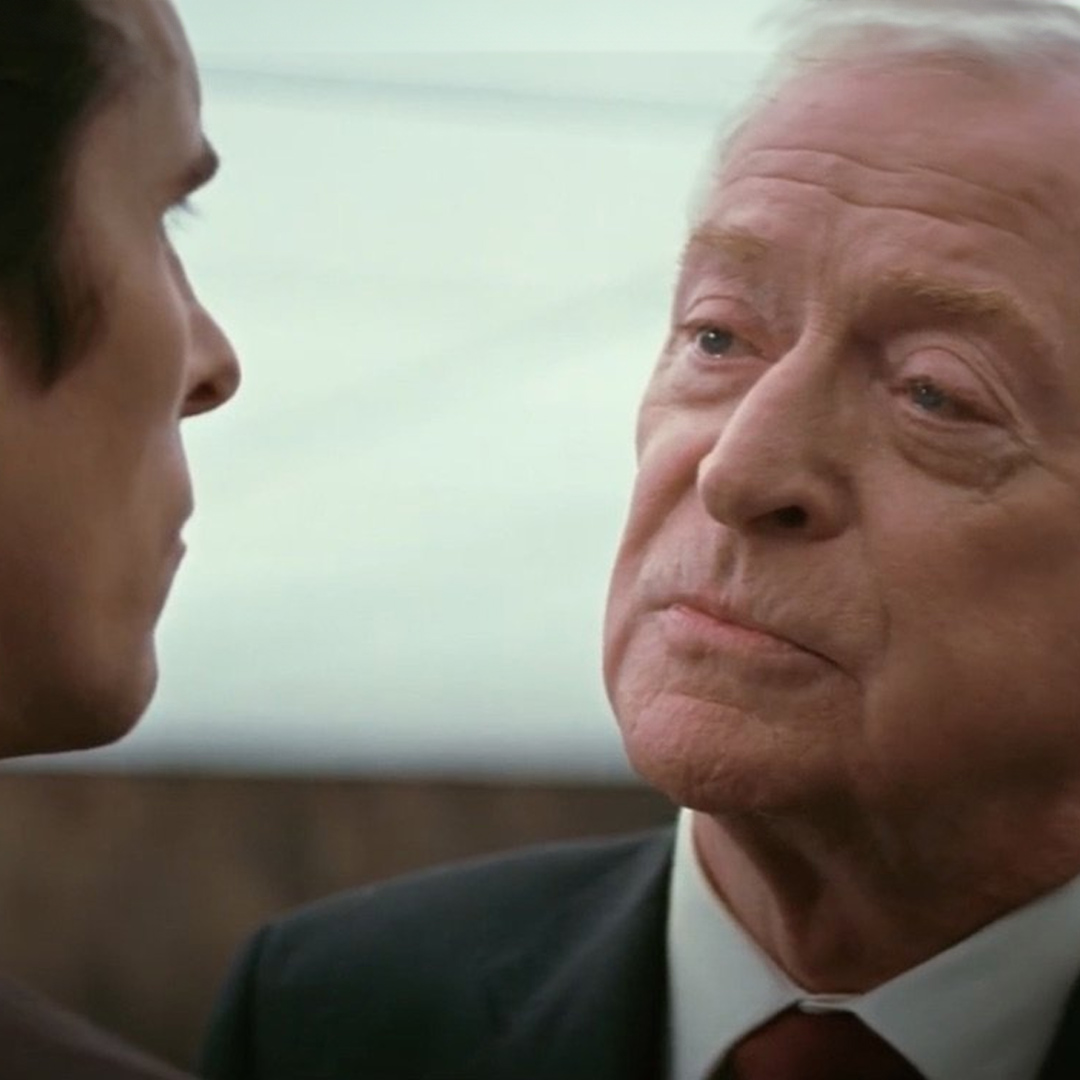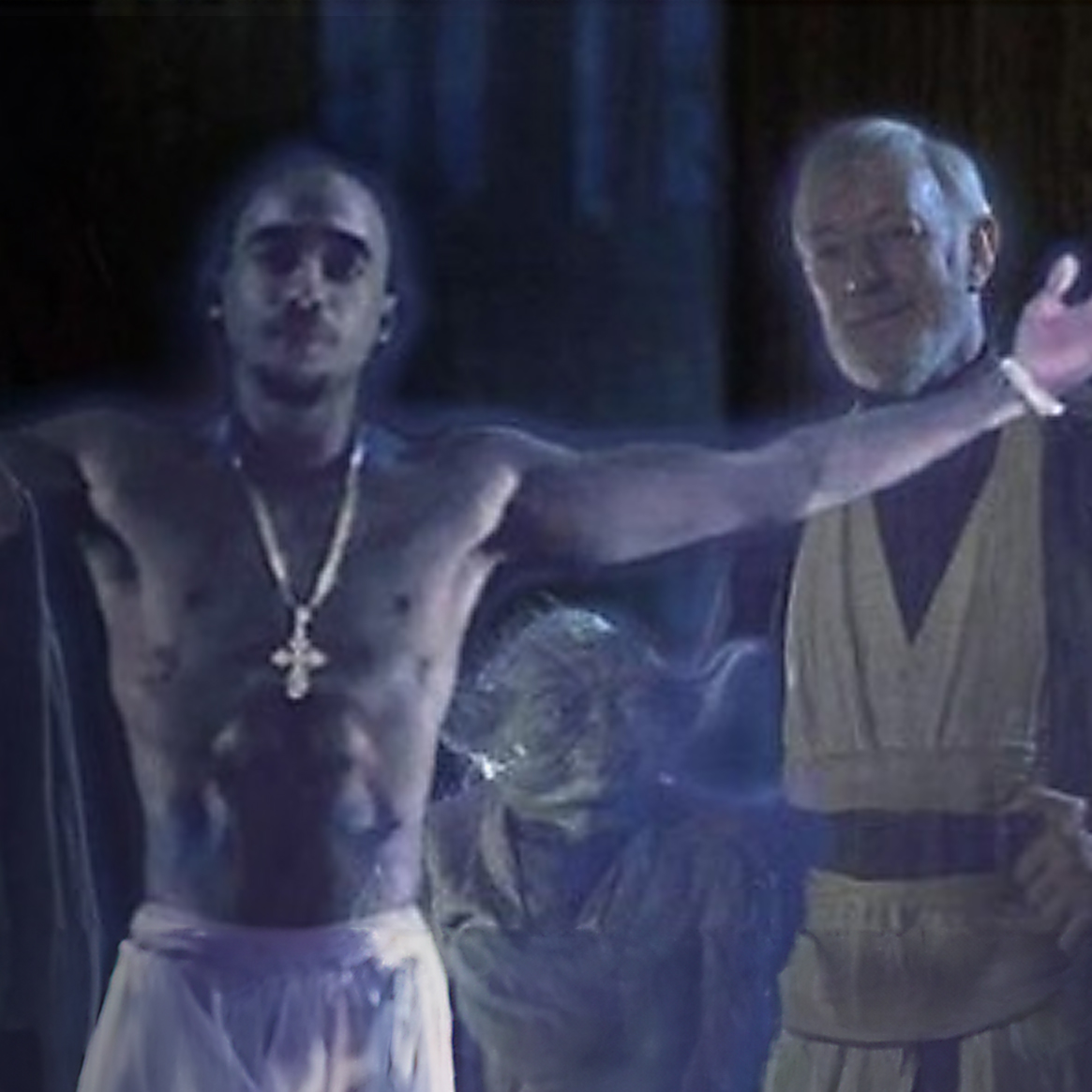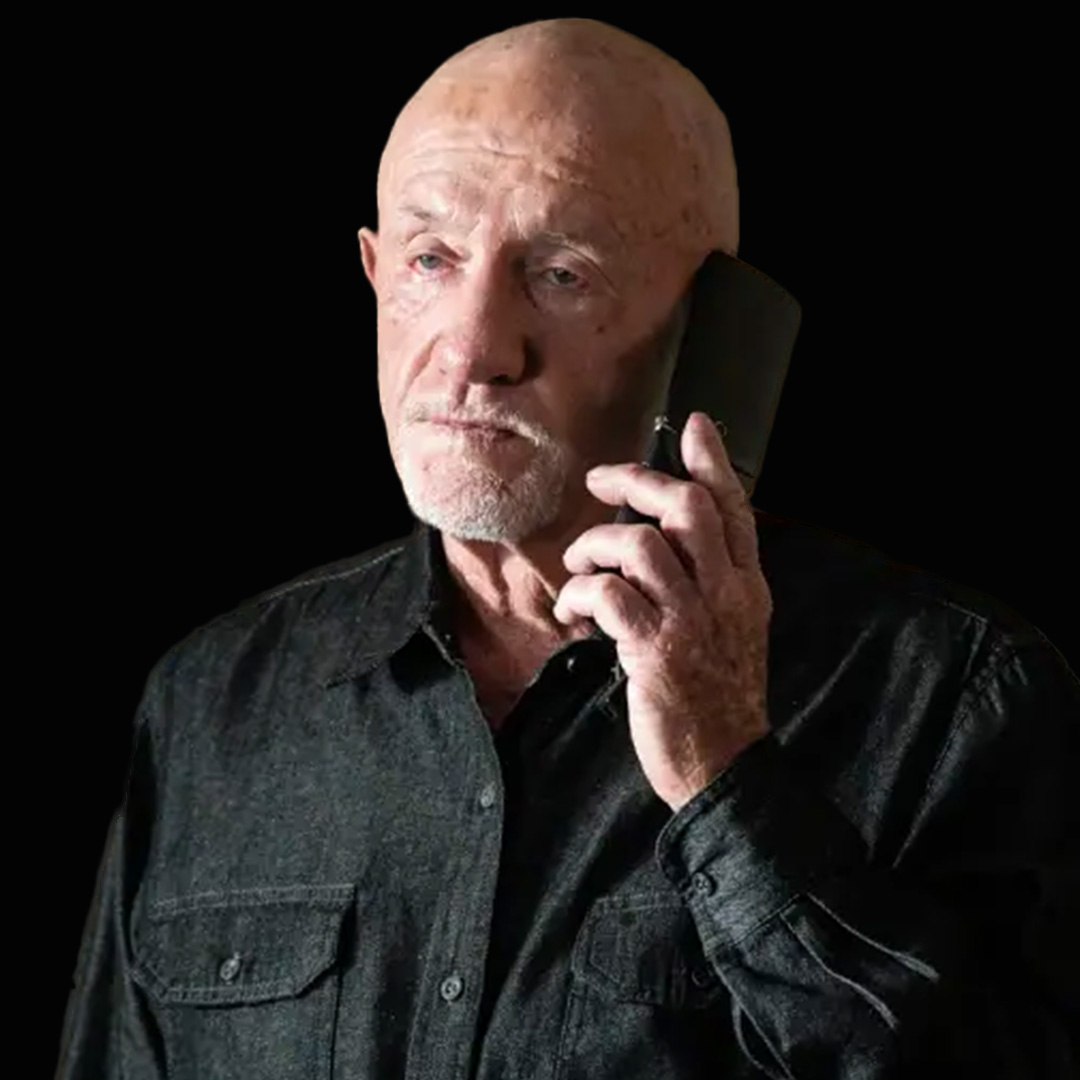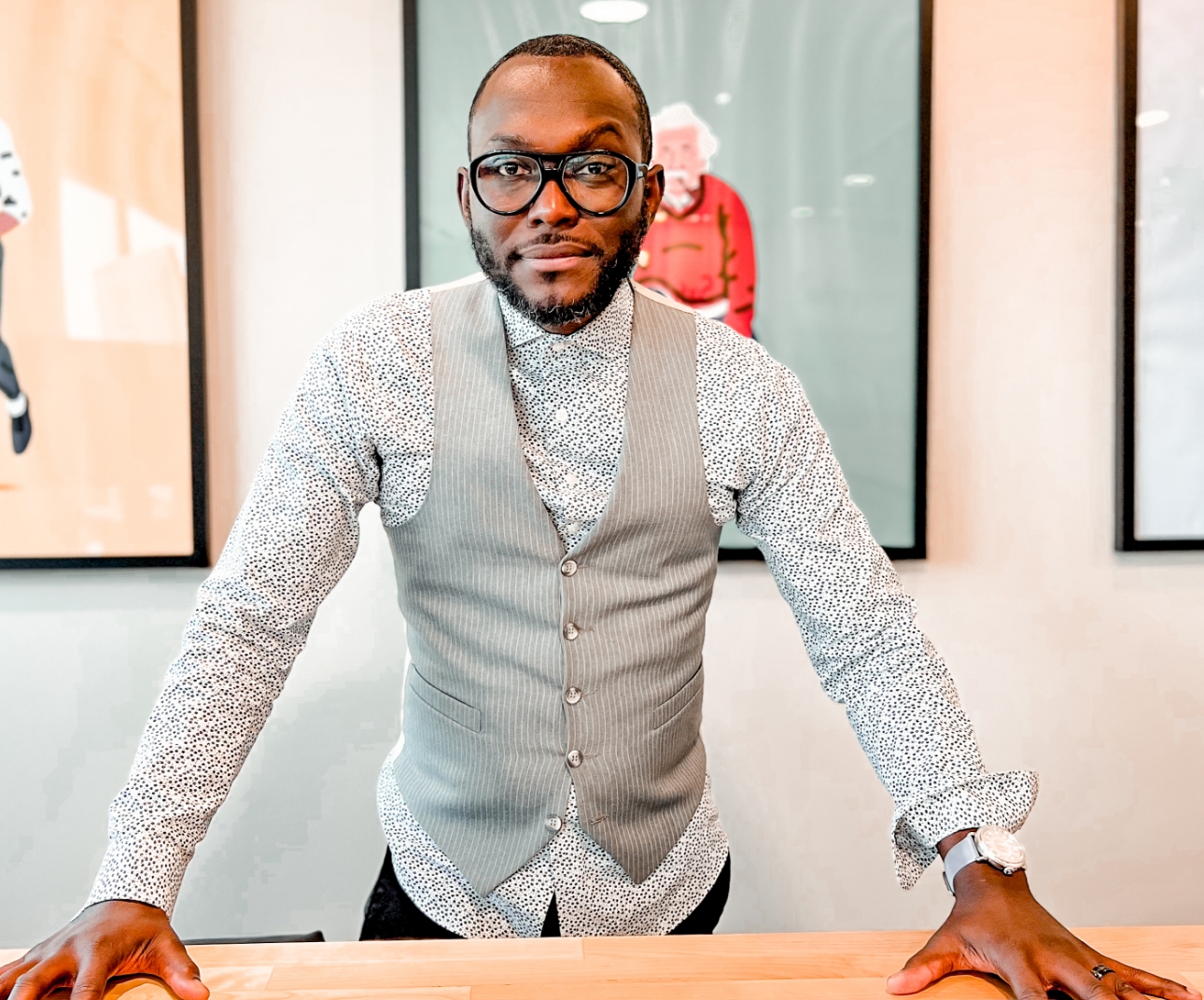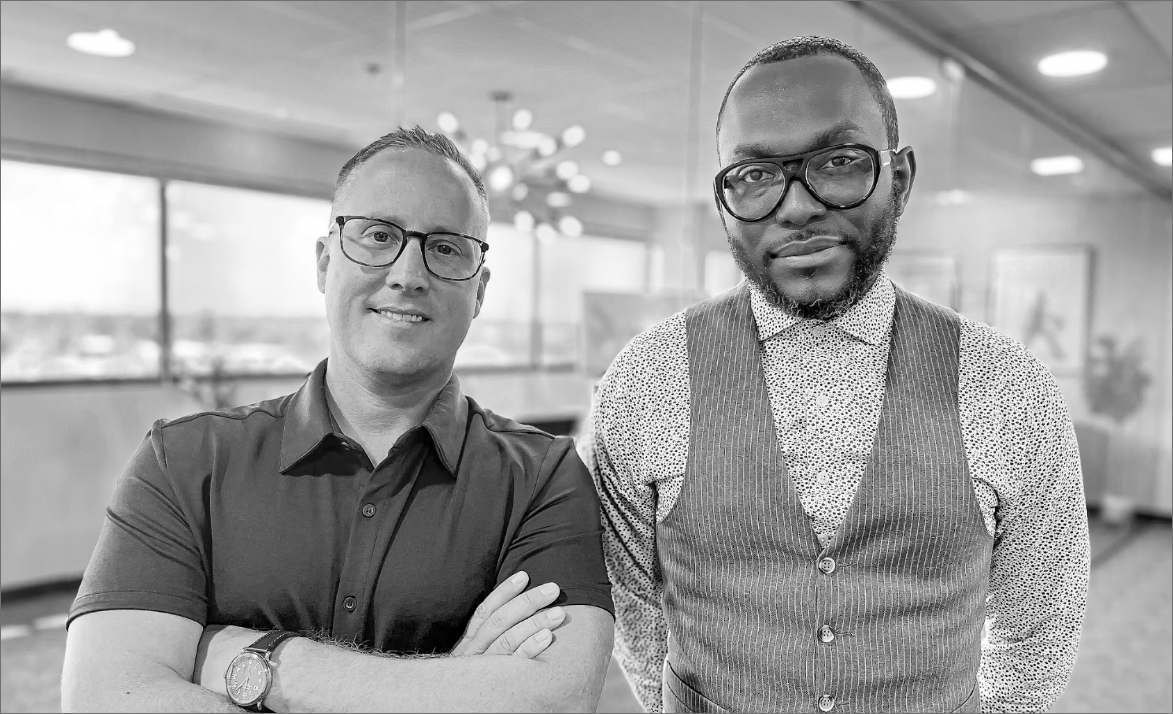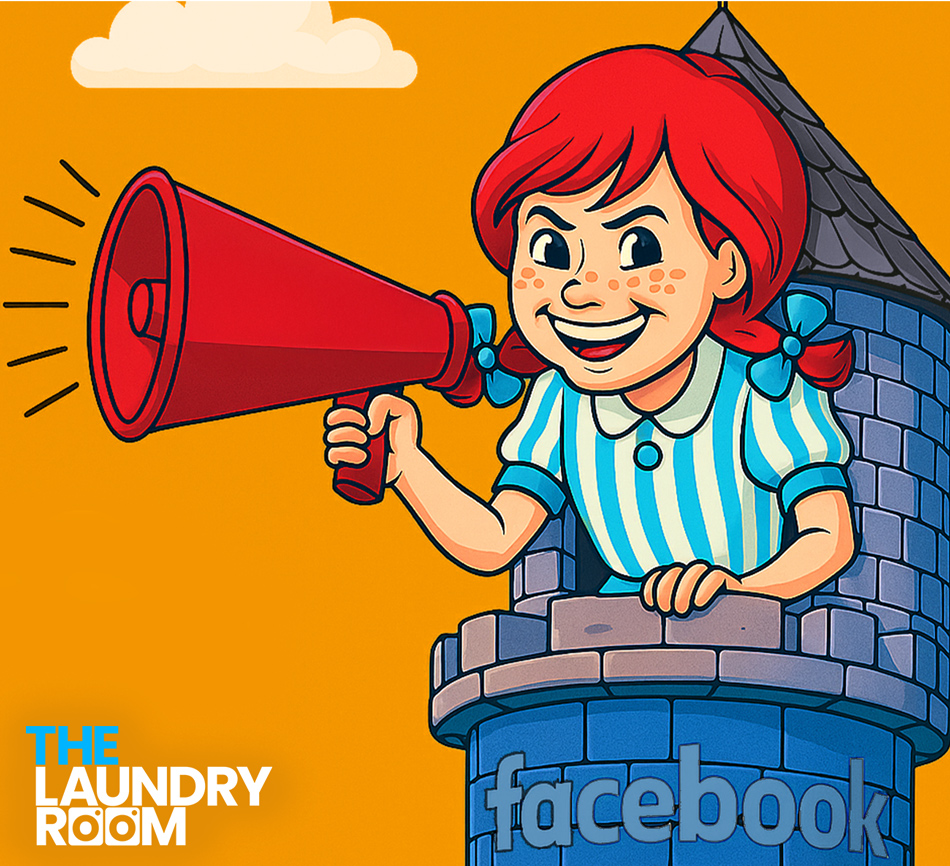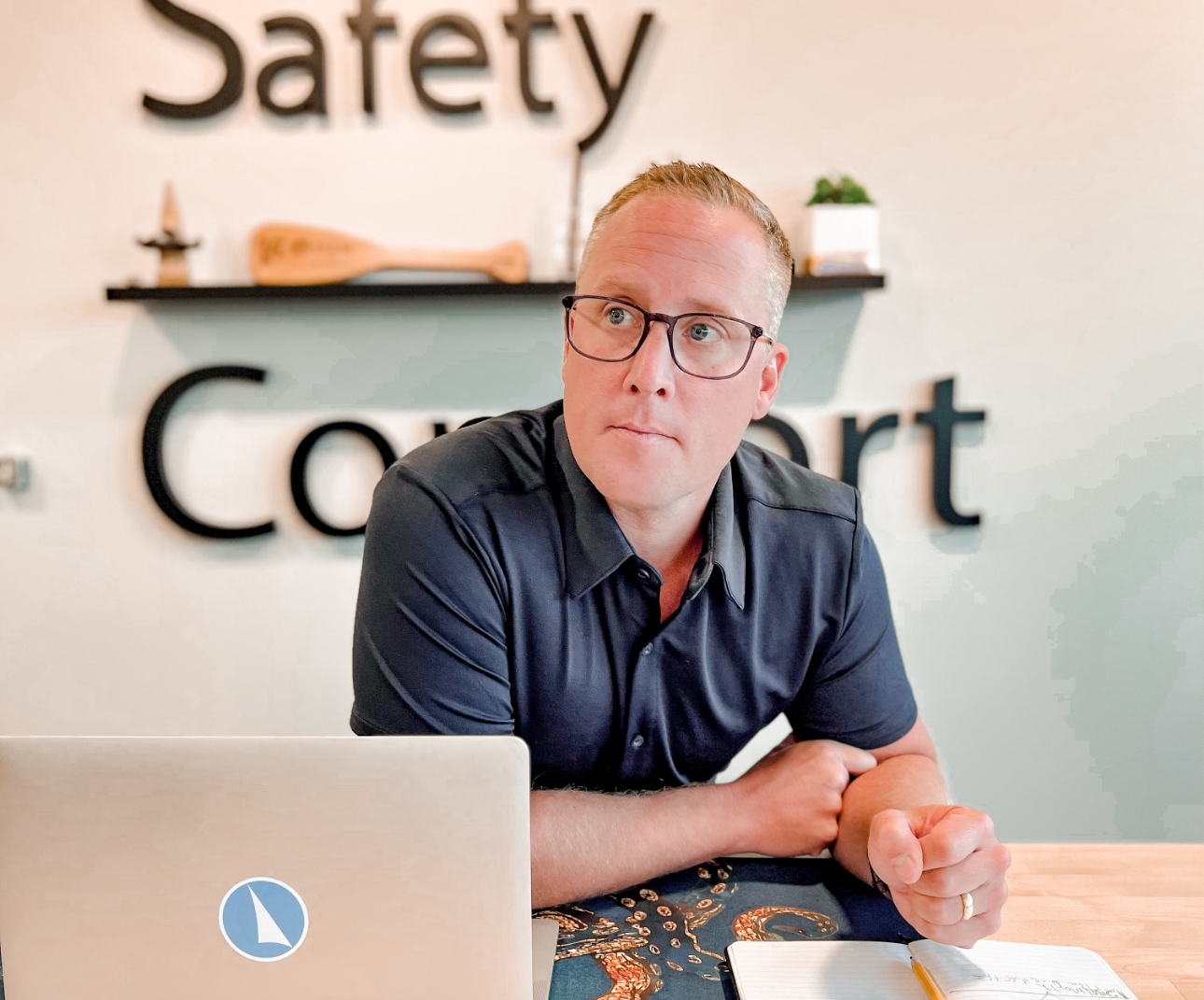00:10 – 00:35
Mike, it’s good to see you, man. Yeah, man. Likewise. It’s really good to see you. Happy spring. Happy spring. Spring has sprung. Spring is sprung. No doubt about it. I love the time change. I love springing forward when it stays later. Lighter. That’s like a. My whole life changes. I feel like because I’m ready for bed at, like six in the winter.
00:35 – 01:02
Like when I leave the house. We better change. Change your clothes. Put your pajamas on. It’s 530. It’s dark out. People don’t like change. So it’s a. This is a love hate time of the year. Some people love it. Some people despise it. And you got to deal with it either way, right? And so it goes I. I’m indifferent.
01:02 – 01:26
I think we shouldn’t be so wishy washy. We should. The time change doesn’t serve the same purpose that it used to. Yeah, I know nothing really about the time change other than it stays lighter longer, which I really like. And the mornings are dark now. Right. You know, but for a little bit, for a little while. But yeah, keep it at this.
01:26 – 01:54
Just keep this time. Now don’t move it again. So now the fall back. I kind of like the extra hour. But anyways, this is the laundry room. We’re back at it again. Back at it, back at it. Talking about all the things that are taboo to some, funny to others, hopefully useful to those who check us out. Certainly has been useful for us.
01:54 – 02:29
If nothing else, it’s a good therapy session. Yeah, right. And we are. Man. Year 17 going into year 17 as an agency. So the lessons learned and the life experience is worth pondering on and worth sharing. So it’s funny too, when you talk about work anniversaries, because it’s actually the 18th year of business turning 17, because that first year that you’re open.
02:29 – 02:56
You don’t get to be one until you go full year. But you did business in that year. Right. So, title tomato. So I’m counting the first year as one. Yeah. Second year to not not. Yeah. I mean, I think the the short answer is we made it past 510. Most businesses don’t make it past seven years.
02:56 – 03:37
So we’re here. I learned a lot during that time. And we made a ton of mistakes, which is what we’re going to talk about today. Yeah. Yeah. Yeah. Failing. And you know that I’m not as avid of a reader as you are, but my favorite books to read are usually the ones where someone is talking about all the mess ups they made, all the mistakes that they they’ve experienced, and they survived, or they had to pivot and thrive in a different, a different area because you can get real.
03:37 – 04:10
Matter of fact, truth. And I had a mentor years ago who somehow, someway was able to instill in me two ways to learn in this world. Either you fall in your face, or you watch somebody else fall in their face and you tell yourself, don’t do that. Right. And so anytime we can learn from what others are doing and then more importantly, learn from mistakes that we made so that we don’t make the same ones as progress and the agency space.
04:10 – 04:39
Man, the consultation space is I don’t think you can be in it without experiencing high levels of failure, high levels of mistake with the hopes of high levels of promise and high levels of opportunity. You know what’s so funny about that, too? When you think about the mistakes? Like, I would say that the first ten years of us doing this stuff was just mistake after mistake after mistake, but there was no book.
04:39 – 04:57
I mean, certainly when when we kind of rode these waves of maybe we were a little late to the search game, we were right on top of the mobile game, right on top of the social game, right on top of the CRM. I would say web is in that two that we really were riding on top of it.
04:57 – 05:22
So it was almost expected that we would make a fair amount of mistakes. Right. Trying to deliver these things just because they were so cutting edge. So it’s funny how like now that I look at that time and I, you know, AI is is the next wave, so to speak, that again, we find ourselves trying to write at the at the front of it.
05:22 – 05:44
That your, your tolerance for it is so high when you do it all the time. So like when we were kind of banging our way through figuring this stuff out, it wasn’t a, it wasn’t crippling or it wasn’t it wasn’t even really looked at as a bad thing in most cases. I think the only time that we beat ourselves up was when it affected our clients in a negative way.
05:44 – 06:05
But I mean, shoot, how many accounts over the years that we take in, like whatever it took, right? Like, you just do whatever it takes to make it work and maybe not the best business plan, but we had to. We didn’t want to charge people for mistakes, right? Like we weren’t going to go down a path for a week and then go back to the client and say, oh, we made this mistake.
06:05 – 06:39
Yeah. I think what’s tough is now there is this unsettling, culture of shying away from mistakes and, you know, name your favorite sports movie or your favorite quotable from any coach. They’ll all, you know, say the same thing. Eventually that you got to make mistakes to get better. You got to put in the practice so that when it’s time for the game, you can know what to do.
06:39 – 07:13
And it’s it’s muscle memory. You only do that by messing up. And I think there is, this culture that exists in some pockets of our industry where it is, it’s, shy, shied from that. People run from mistakes. And we, we talk about this often, like, how do we promote a culture of clients? We’re working with the team that we have where we embrace mistakes, embrace failure for the purpose of being better, getting it right.
07:13 – 07:39
And that is, for a lot of people, counterintuitive. They would rather wait for the answer to be provided rather than making the mistakes to get to the answer. And I, I do question and have a little concern about that with how technology has really infiltrated every aspect of business. Certainly in life the music game was the same way, man.
07:39 – 08:03
There’s a lot of fear and unsettling feelings when technology started to seep in because you it demanded that whatever you were doing, you had to do it differently in our space, certainly starting out as a digital agency. And, that’s how we were, it was cut that way, right? We didn’t know any better. Every day was an experiment.
08:03 – 08:35
Every day was how many mistakes can we make today to find the one thing that works and we got to get back to that. We got to somehow it is super hard to to be like, you know, thinking about even these, the folks that are coming into their career and, and trying to find their footing in the, in, in the marketplace, like from the time you’re born until maybe you get a job, the whole thing revolves around minimizing your mistakes, right?
08:35 – 08:57
I mean, good grades are taking tests and not getting any. You’re not making a mistake on the test like that is the whole setup of, hey, show up, get a good grade on it, study, and then you’ll get a good grade, and then you’ll be able to go to college to then go keep doing that. And then you throw them into a job and you’re like, all right, let’s make some mistakes, guys.
08:57 – 09:21
And it’s like, what? What? I’ve been conditioned for a long time to that mistakes were bad. And how do you I do think it’s challenging for a lot of people to come in to, to a workplace and ask them when asked to be innovative and asked to push the envelope and ask to stretch yourself like that is going to cause discomfort, obviously.
09:21 – 09:41
But those that’s where it’s really hard to exercise that muscle, I think for certainly for younger people, but not just younger people. I mean, I, I fit into this, I, I lived that elementary school, grade school, high school, college. Okay. Go get a job. All right. Show up on time. All right. Go under the radar. I mean, go under the radar.
09:41 – 10:04
Don’t make a mistake. Don’t. Don’t make anybody mad. It’s a hard thing to get over. I would attribute it maybe less to age and more about mindset. Right. There’s, the idea of being in set in your ways and not having this elastic posture of always learning, and the only way you can learn is by trying, right? You try something and you mess up.
10:04 – 10:43
And with us both having kids, I know that’s a that’s a continuous message that we’re trying to give them is you don’t know how good you are or could be unless you try and you’re not going to be that great when you first try. And in marketing, certainly in an agency space, that is the game. I it is absolutely about how do we find how the services we provide, the expertise we have aligns with this growing behavior of the people who are trying to get in front of that makes it really cool for some.
10:43 – 11:05
Is it daunting for others? That’s that’s a great point. And I, I, I think about this like for us in our industry, you know, marketing growth, marketing, lead generation, trying to provide ROI to clients like, what are we really doing? Or what are we here saying? We’re here saying that we’re it’s not that we’re going to not make mistakes.
11:05 – 11:34
We’re just going to make a lot less mistakes than everybody else. So you come to us because we’re going to be a lot smarter and a lot through experience, through studying this stuff, through doing it a bunch of times. You’re coming to us and, you know, even the longevity of, of, 18 years, 17 years, it’s us at least saying, all right, these guys have had to have made a ton of mistakes over the past decade.
11:34 – 12:05
That’s a good sign. You have any, you got any favorite. Oh my gosh I know we were talking about this and like so we don’t have to use any names which is helpful. But this is still kind of embarrassing. The couple that I’m thinking about but one is this was a while ago, so and you know, I don’t know if there’s like this thing where, like, after so many years, looking back on yourself, you give yourself like a, like a pass because it was like, oh, that was ten years ago or oh, that was five years ago.
12:05 – 12:36
And what a, what a silly person I was back then. But anyways, probably probably about ten years ago, would you say, we put in, a bid to do kind of like a for Detroit at least. Like this was a huge opportunity for us. It was a website proposal and company calls us in and we had a great meeting and I so I thought, okay, so we had a great meeting shared with them our process of how we build websites.
12:36 – 12:58
And I think we gave them a couple ideas. If I remember correctly, we gave them some kind of spec work, which was new to us, that aspect of things. And we didn’t get it. And, and she called her name was Carrie. She was so nice and so great. And she called and she’s like, hey, yeah. Just like, you know, we I’m sorry.
12:58 – 13:29
She sent an email letting us know, you know, the John Deere John letter. Hey, you guys didn’t get it. And me being a the whatever you want to call, I immediately get on the phone and I want answers. Right. I want to know, you know what? I thought this was great and I, I remember I don’t remember much about it, but what I do remember is like me kind of sounding like a like a broken hearted, you know, seventh grade boyfriend of, like what?
13:29 – 13:55
What do you mean, like what? I remember, like, we didn’t get this. You guys don’t want us to do this. She’s like, no. And I’m like, I don’t understand in being so naive in it. And it’s so sad and kind of funny because even still to this day, if we see each other out, it’s kind of like a like like there’s this not from me, but certainly from her, because I was kind of so weird with it that she was like, oh man, that guy.
13:55 – 14:07
I remember that guy. Like, I was that guy to her. I was like, I was that one guy that was like, oh jeez, that. But not understanding, though I didn’t know.
14:07 – 14:33
Did I think that they were looking at other, companies to do the website? Perhaps I did, maybe. But to think that, you know, there wasn’t going to be a dialog about it and they were going to make a decision in that, hey, I might not be the one. My time is messed up. This was longer than ten years ago, you know, sitting here thinking, I’m like, man, 15 years had to be like 2010 or something.
14:33 – 15:10
Maybe 2011. Like, man. Yeah, I need to give her a call if that was so. My gosh, that’s it. That’s tough for me. Yeah. So yeah. Not knowing what it, what it all meant, what they were looking at and looking like that, that would probably be one of my most cringeworthy cringe type things. And on the other end, I think a lot of mistakes that I’ve made have been, putting and putting eggs in the basket isn’t probably the best analogy, but trying to get a client to go places that they just weren’t going to go.
15:10 – 15:32
And I never really accepted that. And I, to some degree, I’d say I’m still working on that today, that everybody that we talked to and this is, this is part of what why why you stay alive. Right? So I don’t think it’s all bad. I think this part of the reason that we can stay in biz. But but it can hurt you because you come off not as not a good listener.
15:32 – 15:54
Everybody that we meet, like you and I certainly believe that we could take them to ten acts, at least five acts of what they’re currently doing and otherwise we to take it right. If we if somebody came in and they had a weird product or they were kind of rude or we didn’t, there was no connection there, we’d be like, dude, let’s let’s not get into this.
15:54 – 16:11
Let’s, you know, we could bring them all the leads in the world. But he could if he can’t close them or if he can’t do the work, if we doubt that, we would kind of stay away from those things. Right. But to find the the spot of like, yeah, you could five somebody or ten somebody. But if they don’t want that and that’s not what they’re looking for.
16:11 – 16:38
Yeah. They want to grow but not like not five x growth, not two x growth. Not you to tell them why they should like they’re on a they’re on their path. They have needs they’re looking for. They have expectations of of the outcome. And to try to match our effort with what they’re looking to do rather than like trying to pry them into things that maybe not comfortable with, maybe not ready for.
16:38 – 17:03
Right. We like to come in and look at the marketing lens of their biz and think, oh my gosh, let’s put them in lights. Well, not every business can handle, you know, 1.5 x their customer base in 48 days or 48 hours. And kind of kind of back burning those operational things, those sales things, those infrastructure things that businesses deal with.
17:03 – 17:25
And here we come, the smart, smart marketers coming in and showing you how it’s done. I think those were a lot of mistakes that we made early and especially with us. Right. Writing all these waves, like first it was we got to tell everybody about Google. Then it was we got to tell everybody about the mobile phone. Then we got to tell everybody about social and CRM.
17:25 – 17:47
Like now we got to tell everybody about AI that that kind of pioneering or being on the cutting edge of, sometimes makes your megaphone too loud and you can’t listen. You’re not doing a good job of listening to what what clients are really looking for. I think that’s something we have certainly in the past and still do.
17:47 – 18:39
Maybe on a much more infrequent basis. But the, evolution of our team. The and, you know, I, I think it’s a safe bet that we’re not alone in this stat, but the having a, revolving door at some point in the span of a business, right, when you just haven’t figured out how to create an environment where people feel safe enough to to fail, where people feel safe enough to tackle uncertainty in what we’re doing in the client work or things that we’re cutting our teeth on with our services or products.
18:39 – 19:19
That takes a certain level of special what the group of people that come into a building to do that work. And we’ve been fortunate we’ve had we’ve had teams that have leaned into that. We’ve we’ve also had our share of, mistakes of having the wrong people on the team or mismanaging, mishandling the right people on the team to try to get to a place where that balance of making mistakes is a natural occurrence, and then recognizing it, reiterating, putting it in front of a client, rinse and repeat, right.
19:19 – 19:51
And doing that over and over. And there is I don’t believe the book is the final book has been written on that, because that’s something that is changing all the time. Covid, you know. No, it’s a swear word now when we all use that word covet. But that was a great litmus test. It was a great glass ceiling in how we adapt, in learning, making mistakes, collaborating, providing value.
19:51 – 20:20
Right? I mean, there’s a lot of new things that exist today that would not have existed before Covid. Marketing is no exception. I think the way teams are created is no exception. So my to me, one of our biggest mistakes and biggest lessons I’ve learned is, not everybody is for you just because something looks great or someone presents, well, they actually have something that you think would be an amazing addition.
20:20 – 20:49
It may not be because what you have happening in your four walls could be different than what others are willing to have. And so we have tried erroneously to fit square peg in round hole. All right. We’ve we’ve found people, especially during the days where we had to put on the Blazers. Yeah. Right. And and and allow potential team members to vet us.
20:49 – 21:11
Right. It wasn’t so much us vetting them. It was them vetting us. And just to get to a place where we like, man, we got to have this person. They got to be a part of our team. We make it happen. And it was a big failure, big failure. And so that mindset of not wanting to change versus I’m looking for any and every opportunity to grow.
21:11 – 21:39
Big lesson for us. Anyone who didn’t fit in the shoes that we were trying to wear wasn’t a good fit, and we paid dearly for that in time and treasure in opportunity, in relationships. Fast forward and now, I think a big lesson for us is be comfortable in your own skin. Be comfortable with who you are intended for.
21:39 – 22:04
There are clients. There are, there are partners who would love to work with your type of group. Be okay with girls as like Harry said, hey man, I’m not seeing it. This is, ain’t it? You know, for me, right. Sorry, I went with I went with the the guy down the street and be okay with that.
22:04 – 22:37
And that is, I believe, responsible for a lot of the, euro stress that we have now. A sense of accomplishment, a sense of fulfillment, even in the face of still making no mistakes. That is lost. I think we got to get back to that. People having this growth mindset leaning into it. And man, I tell you, I those lumps still exist during that era of trying to add people to the team that we should have taken a harder look at.
22:37 – 23:14
Another good mistake that we’ve made plenty of times was doing. I don’t think people are going to like this very much, but doing free work never works out. What? When we every single time. Is it funny how many times we’ve done this? But going above and beyond and not letting client know that we did it? I don’t think we’re batting 1,000% on that of it always comes out that there’s zero value driven from it because it didn’t cost anything.
23:15 – 23:35
They don’t know about it, so how are they supposed to value it? And then that third piece is like somehow they hope that it ends up in a bat like that. Bad blood. I wouldn’t say that, but it a lot of ripples happen. Like somehow, someway, every time we go out and try to do this, like real quick freebie.
23:35 – 24:04
Let’s just hook it up, hook them up. It always unravels into, into a bad thing. Now where I think I like what we do. What do we do now? We do the $0 work order, right? Well, we show you essentially what it is and then show you that we’re not charging you for it. I think that’s maybe a safeguard, but it is kind of surprising how many times we’ve done, like, freebies and the freebies really.
24:04 – 24:24
I’m trying to think of a good freebie. I can’t think of a solid free no such thing, man, that we’ve done that like kind of came out number our, 21 by night supply. Oh yeah. I think we even got paid for that. I mean, probably not much of anything, but I think technically still in use today. By the way, we got paid for it.
24:24 – 24:50
Yeah, yeah, yeah. For those that don’t know, Mike and I are famous. If you ever go to the liquor store and see a sticker on the, on the, door that says 21 to buy, not supply Michael. Right there. Michael designed that claim to fame, man. And Mike was a creative. Yeah. And we got that into every liquor store in Michigan.
24:50 – 25:03
I think that about says it all there, Vic. No, I’m kidding. Every single one. Well I don’t know about that. They have.
25:03 – 25:40
I tell you what I’m most proud of talking about now. And, you know, I’ve learned that when you can talk about your shortcomings and your mistakes, it’s when you really overcome them. The role that leadership plays in these mistakes is so critical, so critical. And I quite I quite embrace it now. I quite look forward to making a mistake in the leadership seat, because it is one step closer to getting you to write.
25:40 – 26:30
And that is, that’s something that I think we live in every minute of every day that, I did not realize would be as exciting as it’s exciting because not everyone is into that. Not everyone is into that reality of a decision I made today may very well cost, may cost something dearly. And going into a prepared going into it with both eyes open, but going into it knowing that you might mess up, you might make a mistake and the proof now that it’s worth being excited for, is when you look back and see all the times where the same thing happened and you won and you got better and you were able to
26:30 – 26:55
move through whatever the scenario was, whatever the opportunity was. And we’ve we’ve had our share of burned opportunities. You know, I can think of probably a half a dozen opportunities to win bids where we didn’t have our best showing or, we did the opposite of what we should have done. And, you know, you feel bad about it, and but you’re better for it.
26:55 – 27:19
Yeah. Right on. Right. You’re better I Thanksgiving, man. I remember losing Thanksgiving, working on a client, Ikea. And I knew we were going to lose the account. And you were still doing it. Still? Yeah. That’s. Yeah, I knew we were going to lose it, but we were all in on it. And the call. What the client, I knew it was coming and she said, hey, I don’t think this is working out.
27:20 – 27:43
And I said, I agree. You’re right. We fumbled big time on this. Here’s what we’re going to do about it. Here’s how we make it right. And I tell you, I think there was a level of respect that she had for us by even posturing ourselves to acknowledge the mistake, being there to own it. Yes. Yeah. If you don’t do that, it’s pretty much all in the mistake and say up, you’re right.
27:43 – 28:10
This is this is not how it was meant to be. But we understand. We understand what this means and what what the next steps are. Last one I was thinking about was this, where I think when you think about the agency client, relationship or put it, business looking for agencies, a good thing. To think about when you’re going through this.
28:10 – 28:31
And I think a lot of agencies do this. We did this. But it’s if if someone calls us and we have an opportunity with somebody, it’s real easy to get excited about it. It’s really easy to like, oh, man, so-and-so just called. They’re looking for this and this and this and they called us and they want us to.
28:31 – 29:06
And in rushing into that, let us show you how we’re the provider. Let us show you how we can move the needle. Let us show you how great we are and before you understand exactly what they’re looking for, we did that a lot. I don’t think we do it a lot anymore, but. And on two levels, I think for for clients looking to fulfill these things, it’s a great tell when you’re looking at multiple agencies, the guys that come in or the groups that come in that have the posture of this is what we do, this is what we do, this is how great we are.
29:06 – 29:34
Look at all the sweet stuff we’ve done before for somebody else. When probed and the the response is like, kind of we’ll get to that or yeah, no problem. That ain’t an issue is kind of a tell of yeah. We’re ready to give you a quote. If the agency comes back and is ready to kind of show you the pathway after 30 minutes or after you telling them what you’re looking for, that is a sign that they may not have a good idea about it.
29:34 – 29:56
Right. Or or at the very least, they’re going to put you into a product or a system or a platform that has been step and repeat. Sometimes this could work. Sometimes. A lot of the times, though, when you’re talking about big marketing engagements, that’s very difficult to to hit. Like the gambling scenario. That’s not a good that’s not a good bet.
29:56 – 30:24
So I, I do think that it’s a good tell when you’re when you’re looking in and when you’re vetting agencies that it’s typically the guys that ask the best questions that have, you know, you guys just had one couple weeks ago where it was just a real good dialog with the client that was that would that began with really good questions that you guys were asking, that these questions were so good that it started to build trust for the prospect?
30:24 – 30:43
Yeah. You were asking the right questions of like, okay, cool. He knows this stuff. He asked me that. He gets it. Oh man, he knows about that issue. He must have dealt with that before. It’s not us telling them we’ve dealt with a company like yours before, but through asking good questions and getting responses from them, you’re able to position.
30:43 – 31:04
And I think we’ve done a really good job of that in the last couple years, that we didn’t necessarily do. When you talk about the big opportunities that we’ve had and felt like it just slipped through our fingers. I think that was probably a big part of it is us not doing the work up front to really understand, you know, what they were trying to achieve, what they were trying to get out of it.
31:04 – 31:28
The stakeholders involved, all of the players and, and Colin Bluff, I think that’s a piece to like. I think it’s a good sign when an agency calls your bluff as a client, if so-and-so’s got something to say about something, they’re not in charge of, and then the person that is in charge of it has something else to say, and you as the agency are kind of watching this happen.
31:28 – 32:01
You’re you’re not doing your client any favors. You’re not doing their team any favors. You’re not making any friends. Right? Yeah. Everybody likes the idea of trust. But the, I think the reality is trust is a result of accountability. And accountability is not always fun. Sometimes accountable means having difficult conversations with difficult people. Right? And clients are no exception to that.
32:01 – 32:44
Team members are no exception to that. The dynamic between team member and leader is no exception. You know, I, I, I never want to be a part of a group where if I’m the team member, I can’t go to my leader and tell them why they’re wrong. Right? I never want to be a part of a group where I’m the leader, and team members don’t feel like they can come and tell me why something is wrong that breaks down, accountability breaks down, that level of work necessary to get the trust in this, this ideal of shortcutting trust.
32:44 – 33:07
Let me show you what we did for the last client. Let me show you this cool story about Johnny. We don’t care about that as people. We care about. What are you going to do for me and why should I trust you? And the client engagements that seem to work are the ones where, Or when client engagements become sticky.
33:07 – 33:50
Right? And they you start hanging out with each other a long time are the ones when you can, whether a mistake, whether a failure, something goes wrong. Accountability is there. And it strengthens trust, right? It’s so almost like tearing a muscle, right? Tear muscle. When that muscle grows back, it’s going to be a little bit stronger. And there has to be a level of accountability that, I think is the that’s the tail for people, be it prospecting for a new agency or a new partner to help you with your goals, or be it a company or an agency looking for new clients.
33:50 – 34:14
It’s being accountable to what you care about, what you value, and making sure those that you’re interacting with share the same thing. And we get bamboozled when we’re honest with ourselves, right? We go after these opportunities and we talk to these folks and we we think that, oh, we can be a perfect fit, right? They need what we do.
34:14 – 34:47
They’re trying to accomplish what we can provide, help and support in. But the trust only is only possible with that level of honest, brutal accountability. And that has been, I think, our, our biggest, strength and at times our biggest Achilles heel. And man, wouldn’t it be wonderful if you could walk up to someone and in an instant know whether or not you could trust them?
34:47 – 35:07
That just doesn’t work that way. It is tough, too, because the, the, the expectations and some of this stuff too. You know, when you think about these guys, that client side get new roles like rent, they’re risk averse in many ways. So it is a situation where it’s like, all right, we’re going to become real fast friends or we’re going to become real fast enemies.
35:07 – 35:38
Yeah, yeah. And kind of keep in the. Keep in the flow or the, the, the adoption education process going back, you know, back and forth the knowledge exchange, is, is super important. And sometimes that’s pretty difficult because when you don’t have the trust. Yeah, you’re not really willing to share all that much with you. When I’m with I’m not sure what your, what your angle is yet, what your values are, what your honest good to.
35:38 – 36:07
Because trust is not static, right. It’s always moving. And so what you did yesterday does not solidify the trust for today. There’s got to be some ongoing work in that accountability to make sure that trust still exists. And you know, I know we’ve talked about this several times, but that idea of high fiving after a meeting with client because you think you went well, meanwhile, they’re going home saying, I feel horrible.
36:07 – 36:28
It’s time for us to make a move. And oblivious, right there is not the accountability of having the hard conversations about what’s working, where the mistakes are, or even owning that we’re going to make mistakes as part of this. We should make mistakes, so we’re going to be better. Let’s agree on the degree of those mistakes that are acceptable.
36:28 – 36:54
Let’s agree on how far we’re willing to have a setback so that we can move forward. And those types of conversations are sticky. When you can have that and have a client or have a partner who agrees with that, you can do a lot of damage, do a whole lot of damage. And when you don’t have that man, you have some sleepless nights and some some rough mornings.
36:54 – 37:29
Butterflies in the stomach, all in knots. Yeah. All that stuff you don’t know. Yeah. What do you think are, What do you think are a couple things that people can do, be it if they’re in a service biz, trying to find new clients or if they are the client trying to find the right partners. What are some, some things that they can do to try to quickly or effectively, create that accountability, to build that trust so that, yeah, nobody wants to do this over and over.
37:29 – 37:51
Right. Well, you, you know, I talk about my yard guy a lot. Milan guy long guy’s been with me, man, for eight years. I trust him, I trust him with my with my yard. And being a Florida boy, yards are important to me. But it would only take one time for him to tell. Yeah, lose that for lose that trust, man.
37:51 – 38:12
So what are a couple things that someone could do to work on that accountability or to work towards gaining that trust. One one thing that, you know what what we really. Try to preach here is.
38:12 – 38:33
It’s trying to get really, really clear on on what you want or what you’re trying to get out of it or what where you see yourself. And I guess I’m thinking about right now, I’m thinking about our team, the the best, the best teammates you can have are the teammates that are are able to be brutally honest with you.
38:33 – 39:00
As as we’ve been saying to now, brutally honest, it’s maybe not the best term. It’s being extremely clear with the issues that you’re having, with the problems that you’re facing, with the challenges that you’re trying to overcome. Where I see a lot of failure or mistakes happen or is in the onset, and these are habits, these are anybody can do this.
39:00 – 39:31
This is not a skill. It’s a anybody could learn this. But to be really clear with yourself first as to what you’re looking for, whether it’s change improvement issues, I don’t like the way you say my name. Whatever it is, if you can be really, really clear about that, you are off to a great start. I think the biggest problem is twofold, really, is people aren’t really clear about that.
39:31 – 39:55
And for themselves, what bothered you about that? They may be see something that pingdom, but they did. They do the work to really find out what it was that they took issue with number one. And then number two, just as hard, maybe harder, probably much harder, is to actually talk to them about it. Those two things. And, you know, from a client standpoint, I, I can get I get this too.
39:55 – 40:14
I mean, I haven’t had a new job in quite some time, but to go into a new role and I’m used to doing this when we get new accounts, I go into these new accounts and I’m a guys, I’m a sponge, pretend I’m in third grade. I know nothing about your biz. I’m make it really clear now when we do, we do.
40:14 – 40:43
And that’s great. But new industry that I don’t understand. I make no claims. Claims that I do. I’m going the other way saying, you guys got to talk to me like I’m a little kid so I can understand what it is you do if if you take that posture and and being in-house somewhere, you know, being the CMO or a marketing manager or director and you’re trying to get promoted again, you go back these positions, you think in those positions that it’s, oh, go to them.
40:43 – 41:06
They’ve got all the answers. Maybe for your team, to some degree that’s helpful. But for your leadership, for the partners that work with your business man, that is that ain’t it. Yeah. That that slows you down. And and if you’re scared about, like, coming clean about those things, and I think about clients that come to us and, like, give us a scope.
41:06 – 41:28
Hey, I want to do this and I want to do that. And it’s I want a webinar and I want to do a podcast, and I want to do I want a new brand making stuff up. Why do you want those things? And even the email, like we’re talking to somebody that wanted to hire an email person, like hire someone full time for email and it’s like, why do you want to do so much email?
41:28 – 41:55
Well, because email like, we’ll get sales off the email. We’re going to get new clients from doing email. And it’s like, no, you’re not. You know, like you’ll be able to sell product perhaps. And and could they help you? But are you going to you don’t have the content the the the database, the the circle, the the product offering to support you going all in on hiring an email person.
41:55 – 42:24
And if you if you take that to the marketplace, you will find an email person that will come in and do emails for you all day. The bad side about that is you’re going to find out really quick that it’s not delivering what you’re actually looking for. So if you’re not clear with yourself up front of what do I need in getting that clarity, I think is hard for people like asking for that kind of help from a client side like that means you got to go talk to someone that has a different perspective, someone that’s done it before.
42:24 – 42:53
And I think that’s a real scary thing for a lot of people. Yes. Level of accountability with yourself because the, you know, my favorite saying, when you don’t know, you make it up. And so to go and ask for help does require a level of accountability on yourself to make sure that you understand what you’re asking for or the safety to say, I really don’t know what I’m asking for.
42:53 – 43:15
I need something, and how great are those? Yeah, man, those are so great because we can then, okay, that’s the real issue. You’re trying to solve for, for a fake issue with this solution that has nothing to do with what’s really going on, but I thought it did. Now we can really help. Right. And you know, it’s funny talking about this, I think it’s more common the bigger the organization.
43:15 – 43:39
Oh yeah. The more people, the scarier you are. We had a great call the other day and it was two, and I. What do they have? I know they have thousands of technicians, but home base is maybe 40 people. Yeah. Yeah. And you could see the, the playing field. You could see it safety over comfort. Like they were saying what they thought they were saying, what they think they weren’t trying to be.
43:39 – 44:08
Right. Yeah. It was hey, what about this? This is an issue for me. It was not a it wasn’t this like chess move of who was going to be positioned as the smartest person on the call, right? Right. You know, that’s really helpful. This has been good, man. I think the, next time we have coffee with the team, being able to talk more about, failing and incentivizing it, that’s what I’ve been sitting here thinking about.
44:08 – 44:15
Oh, man. Incentivizing failure. Wow.
44:15 – 44:23
I’ll have to sleep on that. Good stuff. Thanks for everyone for listening. Thanks, guys. Laundry room.

